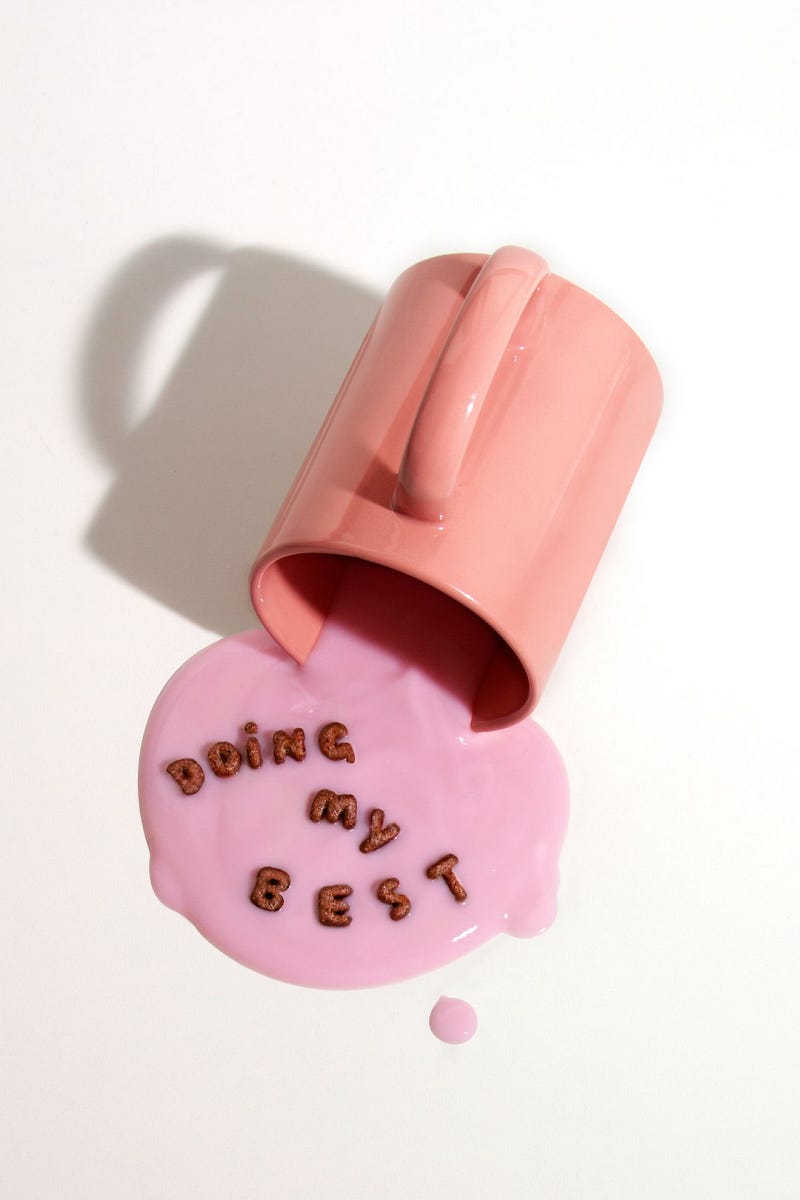Brimming with Busyness
What pouring my morning coffee taught me about capacity

Life Is Short, Drink Hot Coffee
Last year, I decided to gift myself an electronic mug. I remember sitting on a virtual meeting with a coworker who had one and thinking how ridiculous it seemed to spend so much money on a mug. I mean, I love a good, perfectly-hot cup of creamer-laden coffee as much as the next mompreneur does, so I bought a good travel mug with a good lid! It’s actually been a great mug, and it holds the perfect amount of coffee since I typically make about a 14-ounce cup.
Then, one day, the stars aligned:
- I saw the mug at our local warehouse club, one of my happy places.
- I had accepted my inability to put the lid on my travel mug at that perfect moment between scorch-a-tastebud hot and starting to go cold.
- I had released judgment of the aforementioned coworker.
- The mug’s capacity was a match made in heaven for me — 14 ounces!
- I had a gift card I’d been doing my best not to lose and no one to stop me from whipping it out!
I love my mug! Really, the only complaint I have about it is, ironically, its capacity. And maybe I shouldn’t actually be complaining. It does technically hold 14 ounces of liquid. However, the first time I poured 14 ounces of coffee into it, I was disappointed to see it filled to the brim. I felt a little bit duped. Why say that a mug has a 14-ounce capacity if putting that much liquid in it means I can’t comfortably or easily manage it?
It must be that my Higher Self wanted to teach me this lesson. I have no other clue why I ended up researching capacity
Standard Capacity vs. Brim-full Capacity
According to the folks at Jars and Bottles, understanding these different types of capacity is essential. They write, “These measurements ensure that your container can hold the correct amount of liquid while leaving room for capping and preventing overflow.”
Here’s where we stop talking about container capacity and start talking about human capacity. This excerpt is from a quick Google search for “human capacity definition”: “Human capacity is the ability to do something, or the amount of something that can be done.”

When you are committing yourself to doing things, it is essential to ensure that “your container” (i.e., you) can hold the correct amount of “liquid” (e.g., requirements, expectations, obligations) while leaving room for capping and preventing overflow.
Capping
We cap a container when we’ve decided not to put any more into it — usually because we can tell it won’t hold anything more, and we are afraid it might overflow. In terms of mental and emotional health, this is the point at which we might begin to feel stressed and overwhelmed, and we might feel afraid of overflowing (i.e., losing our shit).
Yet, many of us have a tendency to avoid or skip capping in our daily functioning. We may not even recognize it as an option, passively assuming that we can handle whatever amount has ended up in our containers, without recognizing that we are dangerously close to overflowing. Even when we do recognize that sense of stress and overwhelm, we often assume we will figure out a way to handle it — probably because we’ve somehow managed to do this in the past.
Let me shock you: life is not always cooperative, and sometimes we will have to manage more than what feels like our capacity. Oh, you’re not shocked? It figures.
Well, I’ll try again: managing at brim-full capacity doesn’t have to be, and should not be, the default mode of functioning. You can cap and seal your container before the stress and overwhelm begin to set in.
Besides preventing overflow, there are other benefits to capping a container:
- to keep its contents safe from contamination, leaks, and tampering (e.g., to keep your priorities and plans from being changed or canceled)
- to help maintain product quality and extend shelf life (e.g., to help you stay healthy, sane, and functional for as long as possible)
- to give consumers confidence in the product and contribute to customer loyalty (e.g., so that those who rightfully depend on you can trust you and your consistency)
Why Standard Capacity Matters
Back to the wise folks at Jars and Bottles, who tell us “if you mistakenly fill your container based on brim-full capacity when you should be using standard capacity, you may overfill your product, which can result in product waste or difficulty sealing the container.”
In terms of mental and emotional health, your choices to accept commitments are safer when based on your standard capacity. If you have been functioning at brim-full capacity, you are likely overcommitted and trying very hard to prevent “product waste” (e.g., of your time, energy, and money), and at this point, you probably cannot seal your container.
When I filled my mug to brim-full capacity, I had to accept that there would likely be some spillage, and I had to choose a strategy that I thought would minimize it. Sealing it was definitely not an option.
Because I figured I would spill more by attempting a transfer to a larger mug, I decided on a slow walk to the kitchen sink, where I sipped it down to a manageable capacity and carried on with my day. If only an overflowing life situation were as easily solved…

Managing at brim-full capacity doesn’t have to be, and should not be, the default mode of functioning. You can cap and seal your container before the stress and overwhelm begin to set in.
Learning and Honoring Your Standard Capacity
I learned almost immediately to respect my Ember’s standard capacity because it’s brim-full capacity feels too messy to handle. But when it comes to my own capacity, I’ve been functioning like the “many of us” referenced throughout this post — I have mostly considered my brim-full capacity, and I’m not actually sure what my standard capacity is. So, I will spend the coming days and weeks tuning into my personal, standard capacity, and here are some of the questions I’ll be asking myself:
- How can I recognize my standard capacity — the point at which I need to cap myself off from new commitments before I am close to overflowing? What thoughts are coming up for me when I am considering a commitment? Who is asking, and am I feeling pressure because of who it is? How many other “important” priorities am I already managing, and when are their deadlines?
- What does capping look like for me? Is it a simple “no”? Is it refusing to answer a phone call or text message if I’ve already declined, and the person hasn’t accepted it (or if I don’t yet have the courage to say “no”)? Is it reevaluating “important” priorities so that I can replace them with new commitments? What boundaries might I need to consider?
- When I miscalculate, how will I manage being at brim-full capacity? Who can I call for support? To whom can I delegate? What will I do to decompress and care for myself in the meantime? What have I learned to help me avoid being in this situation again?
Do you need support learning and honoring your own standard capacity?



